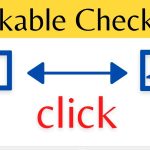Analyzing your competing sites does not help in a strategic sense. Your goal is to work hard, create a site with original content, think about users and produce sales. It is better to focus on your project, be consistent, and work to improve it than spend too much time analyzing the competition.
However, the analysis of competition has a tactical logic. Looking at the competition helps, you have new ideas, new promotions and little tricks that increase the overall effectiveness of your project.
Objectives of the analysis of competing sites
If you are not really a newbie in your niche, you should know the names of your competitors. Search queries that bring people to your site also serve to discover competitors.
Analyzing competitors helps to improve your tactics. Here is what you might know …
- Characteristics of the competitor’s profile.
- Competitor content strategy.
- Information on its business and its products.
- User behavior.
- Technical characteristics of the site, including navigation and usability.
Check out what your competitor’s site does. Look at the things that are good for you, ignore the problems of others because you have enough on yours, before you start correcting others.
Analyze the competitor’s links
When you analyze your competitors’ links you can get useful data for your project. For example, you can find platforms with fresh and interesting content, blogs that publish useful materials for your niche. It is also an analysis that helps to have quality inbound links.
These are useful tools for analyzing the links of your competitors …
- Open Site Explorer
- Ahrefs
- Majestic SEO
Pay attention to the main domains, total links and anchor text. Follow the analysis and create a list of platforms where you can have natural links in any other way.
Analyze the content strategy of the competitors
It is advisable to identify the most popular content of competing sites and the keywords that drive their traffic and create a list of ideas for content to be developed on your site.
These are useful tools for analyzing content …
- BuzzSumo: This service allows you to identify the most effective content on a competitor’s site.
- Searchmetrics: With this tool, you are able to identify the keywords that carry traffic.
- SEMRush: It is the advanced tool for analyzing competing sites. In particular, it helps to identify words that carry traffic.
Your goal is to understand what and how your competitors write. You must create your content that attracts and maintains the public. In this way, you will have many ideas to improve the quality of your content.
Analyze a business and its products.
Analyzing a business and analyzing a product should be done manually. You need a spreadsheet to analyze ecommerce sites, paying attention to the following aspects of your competitors’ businesses …
- What products do your competitors sell and how do they present them?
- How much do they cost? Do yours have offers for different categories of customers?
- How do they sell? How do they generate sales leads, how does their process work and how is their customer service built?
- What are the technologies that your competitors apply on ecommerce?
- Can you compare an assortment of products and prices on competing sites and on your site?
- Who are the service providers that work with your competitors?
Try to find interesting ideas that improve your business, increase the field and drive sales of new products.
Paid traffic analysis
In this analysis phase, you will have to identify how your competitors attract paid traffic. Pay particular attention to contextual advertising used on search engines. Find out where they publish their ads and what keywords they use.
These are useful tools for analyzing content …
- SEMRush
- Google AdWords Keyword Planner
- SpyFu
- Searchmetrics
With the help of these tools, you will find the main keywords that your competitors use in advertising campaigns – the most profitable keywords, competitive announcements and other data regarding PPC campaigns. Searchmetrics allows you to estimate the approximate cost of attracting paid traffic for each keyword.
In addition to contextual advertising, additional strategies must be put in place to bring traffic to the site. Pay attention to the ads placed on social networks: if your competitors publish their ads on social networks, then you will notice for sure. Check out the biggest sites in your niche. Perhaps your competitors publish advertorials or buy banner ads in these places.
Create a list of ideas, based on the analysis, to help you improve the effectiveness of advertising campaigns. What keywords can you use for your PPC campaigns? Is it worth investing in Facebook Ads or banners on large information portals?
Analysis of user behavior
Analyzing user behavior is necessary to understand how and why users visit a website, how much time they spend on it and the average number of pages viewed per visitor. If you compare this data with user behavior on your site, you can get ideas on how to improve.
These are useful tools for analyzing traffic …
- SimilarWeb: Learn about traffic sources, geography of visits, research, paid traffic and social traffic, the interests of the public.
- Alexa: This is another site that offers analysis tools of competitors.
Pay attention: the data are very approximate and identify trend lines, they are not to be taken as truths and revelations. This analysis is useful for you to develop a plan that improves the effectiveness of your site. For example, if a competing site has twice as many visits per page as your site, you should rethink your content strategy and improve the navigation of your site.
Analyze technical aspects, design and usability
Keep track of key metrics to measure the technical effectiveness of your competitors’ sites and spy on them for ideas that improve your site. Use the following tools to monitor the technical aspects …
- Woorank: With this tool, you learn about the technologies used, the analysis systems, the mobile optimization and the technical aspects of usability of a site.
- Insights PageSpeed: This Google service allows you to check the speed of uploading a website and suggestions for improvement.
- Google Mobile-Friendly Test
Manually analyze the design, functionality and usability of the site of your main competitors. Pay attention to pleasant services, navigation elements, landing pages and conversion forms. Based on the analysis results, create a list of ideas to improve the functionality and usability of your site.
Analyze competing sites, but don’t get in a trap
Consider competing sites as a source of ideas to use to improve your project. However, don’t work to make your like a copy of others. Follow your development strategy, keep your project unique and take the best ideas to improve the overall effectiveness of the site from your competitors.







